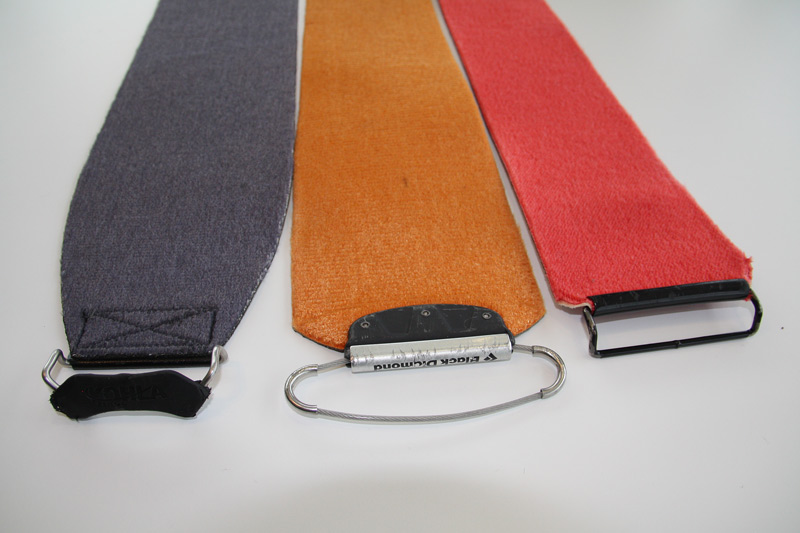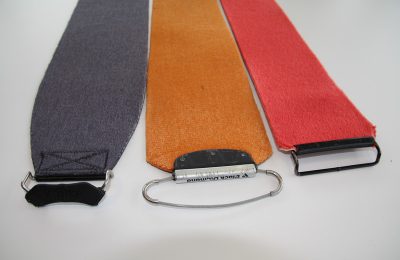1. Nicht zu früh auffellen!
Popular, but unfavorable: Don’t put skins with normal fur glue on the skis the night before (even if you hear this again and again). The adhesive becomes too soft if the heat is too high (e.g. heating cellar!) This can cause the adhesive surface to become rough in the long run and lose adhesive power. Also, one likes to pull topping fillings (after topping repairs) from the ski, which then stick to the fur. So the skins are best just before the tour, at home at room temperature.
2. Immer trocken auffellen!
When looking on, make sure that the ski surface is dry and not too cold. The adhesive side of the fur should also be snow-free and as bodily as possible. Otherwise, the adhesive power will be lost. Those who look up several times on a cold tour should therefore not store the skins in the backpack, but under the jacket on the body. Many mountain jackets have the big breast pockets for this very reason.
3. Im Stehen auf- und abfellen!
If you want to get up or down on the way on tour, you can best put your skis vertically in the snow (depending on the clamping system of the skins, the end of the ski shows where you start up). This avoids unnecessary contact with the skins. Those who use summit socklers can now easily roll off the fur on the ski piece by piece. Only shortly before the end, the ski is turned over and the last piece is felled up or down.
4. Felle niemals zusammen kleben!
When felling, the ski skins must never be placed on top of each other with the adhesive sides. This is the safest way to quickly ruin the glue. Unfortunately, you read this classic over and over again. This is because when pulling apart, the adhesive sides do not detach evenly from each other. Instead, the stronger adhesive area gains here and tears off the adhesive on the opposite side. One reason why there are summit sockerl.
5. Felle schonend trocknen!
Skins should be gently dried after each tour. Heating and direct sun are absolutely taboo, however, as this quickly dries out the glue. If the breaks between the tours are only short (day by day), the skins in the sockerl can be laid loosely at room temperature, so that the adhesive surfaces are always covered by the sockerl. Before long breaks, the sockerl should be at home on the plastic foil supplied with the skins, so that the adhesive sides are covered again. Then let over the clothesline at room temperature, let dry.
6. Felle nicht zu warm lagern!
For longer storage, the dry skins are rolled together or laid. Then they come into a breathable bag (caution: without air and slightly moist can also mold skins). Storage should be light-protected, dust-free and not too warm. The glue prefers to be cool, otherwise it likes to run.
7. Kleber vor Schmutz schützen!
If you keep your adhesive surfaces clean, you will have a longer time. Dust, carpet fibres, textile fuses, forest floors, etc. are small adhesive killers. Larger dirt particles should be removed as soon as possible with tweezers and/or a razor blade/knife. Especially small stones have to get out so that they do not scrub the fur. With the small pollution, one rarely has a chance. Only preventive care helps.
8. Trockene Felle stollen weniger!
Wet skins like to stollen and stick badly. Therefore, the ski skins should always remain as dry as possible. An impregnation of the skins with special spray or wax also helps against the tunnel (it is also possible to make hard ski wax). Small test for home: If water drips from the fur side, stollen should not be an issue. Otherwise impregnate!
9. Tape für die Erste Fell-Hilfe!
On tour you should always have a mini roll of panzertape (industrial tape) with you. If the adhesive of the skins or a clamping system fails, then the fur can be provisionally attached to the ski. Two windings around the complete ski with fur, ready. Bandtape also goes to the need, but usually only lasts very short.
10. Felle vor Verwechslung schützen!
Some ski fur has already accidentally changed hands on huts in the morning. Therefore, it is best to mark your own fur unequivocally.


